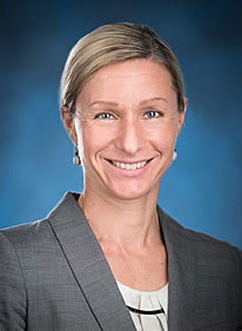
Our life span is how long each of us actually lives — our life expectancy, on the other hand, is how many more years we can we can expect to live.
Unfortunately, there is no such thing as a crystal ball that will allow us to determine exactly how long we are going to live.
However, in medical malpractice claims, especially birth trauma claims involving infants, predicting life expectancy is a critically important issue that can make a difference of millions of dollars to a child’s claim.
Why Is Life Expectancy Important in Birth Injury Claims?
When you consider that a child with cerebral palsy usually requires care 24 hours a day you can see how the cost of attendant care can amount to tens or even hundreds of thousands of dollars per year. Since cerebral palsy is a permanent disability, most people with cerebral palsy will require care for the rest of their life. You can see how the future life care plan can amount to millions of dollars over a child’s life span.
It goes without saying that in any medical malpractice claim the defendants will always try to minimize the child’s life expectancy (in order to reduce anticipated future care costs) while the birth injury lawyer representing the child is usually more optimistic about life expectancy in order to ensure that the child’s medical, rehabilitation, and attendant care needs will be adequately met.
Is There Reliable Data About Canadian Life Expectancy?
Statistics Canada collects data and publishes statistics on projected life expectancy for Canadians. The data looks at a person’s average life expectancy based on a number of criteria including their age, sex, and their province of residence. They also collect data regarding the effect of an individual’s socioeconomic status on their projected life expectancy.
Experts Involved in Determining Life Expectancy
There is no way to determine with certainty how long anyone will live, whether they are perfectly healthy or whether they are suffering from a significant disability like cerebral palsy.
However, there are different experts that lawyers may turn to in order to assist in predicting what the future likely holds for an injured child.
- Actuaries: An actuary is an expert who has been trained in evaluating data and statistics in order to evaluate future risk. Most actuaries work for insurance companies in order to help insurers reduce risk and maximize premiums/profits. Actuaries use available population-based statistical data to make predictions about how a child’s disability will impact their projected life expectancy.
- Medical professionals who work with catastrophically injured persons: In birth injury claims it is common to get advice from medical specialists who treat patients with cerebral palsy. For example, neurologists (physicians who specialize in treating injuries to the brain) and/or physiatrists (who treat a wide variety of medical conditions affecting the brain, spinal cord, nerves, bones, joints, ligaments, muscles, and tendons).
- Epidemiologists: Epidemiology is the field of medicine that deals with the incidence, distribution, and control of disease and other factors that impact health and life expectancy.
How Birth Injury Lawyers Determine Life Expectancy
As a starting point, lawyers representing children who have suffered birth injuries generally begin with a presumption that the child, had he or she been born without injury, would have lived to at least the average life expectancy of other Canadians with similar demographic characteristics.
Then the birth injury lawyer typically retains one or more medical specialists experienced in treating patients with cerebral palsy (or similar injuries) to determine if the child suffers from any injuries that may decrease their projected life expectancy.
For example, persons confined to a wheelchair are statistically more likely to suffer from respiratory infections because of their decreased movement. Some types of neurological injuries can cause seizures which can be life-threatening, resulting in a potential decrease in projected life expectancy.
Then the birth injury lawyer will usually retain an actuary or an epidemiologist to do an analysis as to whether the child’s individual circumstances put them at greater risk of suffering a life-threatening event before the average life expectancy of other Canadians.
The focus, in any birth injury case, is not how the child’s injuries may impact their life expectancy but rather how their injuries are likely to impact their life expectancy based on the individual circumstances of the child.
A great deal of consideration must be given to the nature of the medical care the child is receiving and is anticipated to receive in the future. What kind of support is the child receiving from family members? Will the child remain at home and be cared for by loving family members or will he or she be placed in a long-term care institution? All of this evidence must be weighed and considered to determine if it increases or decreases the chances of the child having a life expectancy that is shorter than the average Canadian.
How Defense Lawyers Evaluate Life Expectancy
Defense lawyers trying to reduce projected life expectancy generally do not refer to Statistics Canada data. Instead, defense experts almost invariably rely upon a database compiled by statisticians in California called the “Life Expectancy Project.”
The California data was collected in the 1980s. The project is currently run by two statisticians, David Strauss and Robert Shavelle. Strauss/Shavelle have published a number of journal articles using the California data. This database was limited to disabled persons in California who were receiving government assistance. The approach used by Strauss/Shavelle is to slot patients into narrow classifications based on their mobility and whether or not they can feed themselves.
The articles then go on to predict dramatically reduced life expectancies for children who fall into any of the narrow criteria selected by the authors.
There are some fundamental failings with the approach taking by Strauss/Shavelle and other defense life expectancy experts who use their database:
- Srauss/Shavelle are not physicians. They are not trained in the care and treatment of patients and have no experience in treating or caring for children (or adults) who have suffered severely disabling neurological injuries like cerebral palsy.
- All of the subjects in the Strauss/Shavelle studies were in institutional care. The studies did not include patients receiving in-home support from family members. It goes without saying that care from a family member is likely to be more attentive than routine care provided in a large institution.
- Canadian studies of the life expectancy of children with cerebral palsy show significantly higher survival rates than the California statistics published by Strauss/Shavelle.
- Recent data from California indicates a significant decline in mortality rates in children with cerebral palsy which is consistent with the long-term trend of increased life expectancy for populations as a whole and children with cerebral palsy in particular.
- The Strauss/Shavelle studies do not indicate the causes of death that were considered when determining mortality. Therefore, the relevance of these statistical population-based findings is problematic.
- The Strauss/Shavelle studies were prepared by analyzing “Client Development Evaluation Reports” compiled by the California Department of Developmental Services. These reports were prepared entirely for placement purposes and not for the determination of appropriate medical treatment or even for the purpose of collecting statistics to be used in the prediction of life expectancy. Strauss/Shavelle did not review the raw data to determine its appropriateness for use in supposedly projecting life expectancy.
- The database used in the Strauss/Shavelle articles has never been produced for peer review to determine if the statistical models that form the basis of their opinions are scientifically sound.
The Problem With Population Based Studies
Broad-based population studies can be a useful statistical tool when making decisions dealing with large populations (for example in determining the cost of health care to cerebral palsy patients across Canada). However, these types of studies are not particularly helpful when determining the needs of individuals.
Standard deviation represents the amount of variation within a set of data values. The more individualized the need, the greater the level of variance from actual values. The Strauss/Shavelle articles do not contain any analysis of the standard deviation of the statistical studies upon which the articles are based.
The California database fails to account for other health conditions that might have resulted in early death.
Hutton and Pharoah in an article titled “Life Expectancy in Severe Cerebral Palsy” emphasize the importance of controlling for other potential fatal health conditions:
“Any database used for estimating the probability of survival in CP must exclude all syndromes that have a progressive cerebral impairment. Failure to do so may seriously bias the survival estimate. The diagnosis, particularly of severe CP, may be made in the first months after birth but it is essential that later confirmation is obtained. Several conditions, notably neuromuscular disorders, lipid storage diseases and other metabolic disorders, and cerebral neoplasm may be misdiagnosed as cerebral palsy during early child development. Failure to exclude these from the analysis will lead to an understatement of survival.”
Canadians as a whole enjoy an increased life expectancy over our American neighbors. Generally, Canadians live an average of three years longer than Americans in the same circumstances.
Differences in the health care systems in Canada and the United States also raise questions about the appropriateness of using the California database.
How the Courts Have Dealt With Life Expectancy
The courts generally look for evidence from experts to determine the appropriate life expectancy for a particular child.
For example, in Crawford v Penney the infant Plaintiff Melissa Crawford sustained hypoxic ischaemic encephalopathy caused by shoulder dystocia. Melissa spent her day between a bed and hospital gurney (transporter) and was fed entirely by a G-tube. The defendants presented evidence from a pediatric neurologist Dr. MacGregor who relied upon the California studies that set life expectancy by reference to mobility and nourishment through tube-feeding. Dr. MacGregor testified that the Plaintiff’ s life expectancy was 40 years. The plaintiff provided expert opinion from a physiatrist who specializes in treating children and adults with cerebral palsy, Dr. Berbrayer. Dr. Berbrayer’s opinion was that, based on the actual health limitations suffered by the plaintiff, her life expectancy was 57 to 62 years of age. The Court preferred the findings of the Plaintiff’s experts on the basis that the opinions were: “…focused more directly on Melissa’ s peculiar circumstances.”
Conclusion
Birth trauma cases are incredibly complex. They require the presentation of expert evidence on the issue of standard of care, causation, and damages. As you can see, having appropriate and comprehensive evidence with respect to how your child’s injuries will impact projected life expectancy can make a huge difference in the amount of your child’s claim.
A projection of life expectancy that is too low can mean that the money set aside to care for your child may run out prematurely.
An experienced birth injury lawyer will be able to provide you with advice as to what expert evidence is appropriate to establish your child’s life expectancy and will know the most effective ways to undermine the unfairly low life expectancy opinions that will be provided by the defendant’s experts.

Susanne Raab is a lawyer at Pacific Medical Law, and an advocate for people living with disabilities. She has been selected for inclusion by her peers in Best Lawyers in Canada in the area of Medical Negligence and is recognized as a leading practitioner in the Canadian Legal Lexpert® Directory in medical malpractice. Susanne is also a Fellow of the Litigation Counsel of America, an honorary trial lawyer society whose membership is limited to less than one-half of one percent of North American lawyers, judges and scholars.
